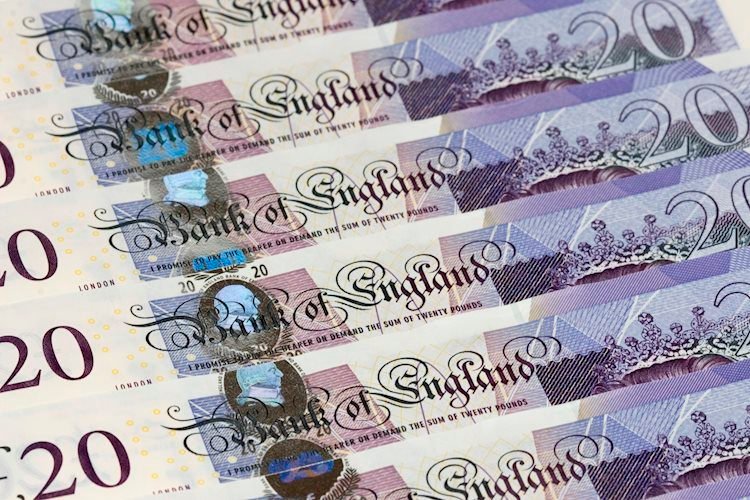- GBP/USD trades below 1.3050 in the European session on Monday.
- The near-term technical outlook highlights a lack of buyer interest.
- 1.2960 aligns as the next key support level for the pair.
GBP/USD stays under modest bearish pressure and declines toward 1.3000 to start the new week, after posting daily gains on Thursday and Friday. A daily close below 1.2960 could open the door for another leg lower.
British Pound PRICE Last 7 days
The table below shows the percentage change of British Pound (GBP) against listed major currencies last 7 days. British Pound was the weakest against the US Dollar.
| USD | EUR | GBP | JPY | CAD | AUD | NZD | CHF | |
|---|---|---|---|---|---|---|---|---|
| USD | 0.76% | 0.37% | 0.54% | 0.31% | 0.88% | 0.74% | 0.97% | |
| EUR | -0.76% | -0.47% | -0.31% | -0.35% | 0.15% | -0.11% | 0.12% | |
| GBP | -0.37% | 0.47% | 0.14% | -0.03% | 0.65% | 0.37% | 0.56% | |
| JPY | -0.54% | 0.31% | -0.14% | -0.23% | 0.36% | 0.25% | 0.42% | |
| CAD | -0.31% | 0.35% | 0.03% | 0.23% | 0.52% | 0.46% | 0.47% | |
| AUD | -0.88% | -0.15% | -0.65% | -0.36% | -0.52% | -0.13% | 0.05% | |
| NZD | -0.74% | 0.11% | -0.37% | -0.25% | -0.46% | 0.13% | 0.16% | |
| CHF | -0.97% | -0.12% | -0.56% | -0.42% | -0.47% | -0.05% | -0.16% |
The heat map shows percentage changes of major currencies against each other. The base currency is picked from the left column, while the quote currency is picked from the top row. For example, if you pick the British Pound from the left column and move along the horizontal line to the US Dollar, the percentage change displayed in the box will represent GBP (base)/USD (quote).
Pound Sterling held its ground in the second half of the week as it managed to capture capital outflows out of the Euro. Additionally, the positive shift seen in risk mood helped GBP/USD edge higher heading into the weekend.
The cautious risk mood early Monday helps the US Dollar (USD) stay resilient against its rivals and forces GBP/USD to stay on the back foot. US stock index futures trade marginally lower on the day, although Wall Street’s main indexes registered gains on Friday.
The economic calendar will not feature any high-impact data releases on Monday. Hence, investors could continue to react to changes in risk perception. If major US equity indexes turn bearish after the opening bell, the USD could preserve its strength and make it difficult for GBP/USD to limit its losses.
On Tuesday, Bank of England (BoE) Governor Andrew Bailey will deliver a keynote address at the Bloomberg Global Regulatory Forum in New York. Later in the week, investors will scrutinize S&P Global’s preliminary October Manufacturing and Services Purchasing Managers Index (PMI) data for the UK and the US.
GBP/USD Technical Analysis
The Relative Strength Index (RSI) indicator on the 4-hour chart retreated below 50 after holding above this level in the second half of the previous week, reflecting buyers’ hesitancy to bet on an extended recovery.
On the downside, 1.2980 (static level) aligns as immediate support before 1.2960, where the 100-day Simple Moving Average (SMA) is located. A daily close below the latter could bring in additional technical sellers and pave the way for another leg lower toward 1.2900 (round level, static level).
Looking north, interim resistance could be spotted at 1.3050 (50-period SMA) before 1.3090-1.3100 (Fibonacci 23.6% retracement of the latest downtrend, static level) and 1.3140 (50- day SMA).
Pound Sterling FAQs
The Pound Sterling (GBP) is the oldest currency in the world (886 AD) and the official currency of the United Kingdom. It is the fourth most traded unit for foreign exchange (FX) in the world, accounting for 12% of all transactions, averaging $630 billion a day, according to 2022 data. Its key trading pairs are GBP/USD, also known as ‘Cable’, which accounts for 11% of FX, GBP/JPY, or the ‘Dragon’ as it is known by traders (3%), and EUR/GBP (2%). The Pound Sterling is issued by the Bank of England (BoE).
The single most important factor influencing the value of the Pound Sterling is monetary policy decided by the Bank of England. The BoE bases its decisions on whether it has achieved its primary goal of “price stability” – a steady inflation rate of around 2%. Its primary tool for achieving this is the adjustment of interest rates. When inflation is too high, the BoE will try to rein it in by raising interest rates, making it more expensive for people and businesses to access credit. This is generally positive for GBP, as higher interest rates make the UK a more attractive place for global investors to park their money. When inflation falls too low it is a sign economic growth is slowing. In this scenario, the BoE will consider lowering interest rates to cheapen credit so businesses will borrow more to invest in growth-generating projects.
Data releases gauge the health of the economy and can impact the value of the Pound Sterling. Indicators such as GDP, Manufacturing and Services PMIs, and employment can all influence the direction of the GBP. A strong economy is good for Sterling. Not only does it attract more foreign investment but it may encourage the BoE to put up interest rates, which will directly strengthen GBP. Otherwise, if economic data is weak, the Pound Sterling is likely to fall.
Another significant data release for the Pound Sterling is the Trade Balance. This indicator measures the difference between what a country earns from its exports and what it spends on imports over a given period. If a country produces highly sought-after exports, its currency will benefit purely from the extra demand created from foreign buyers seeking to purchase these goods. Therefore, a positive net Trade Balance strengthens a currency and vice versa for a negative balance.








